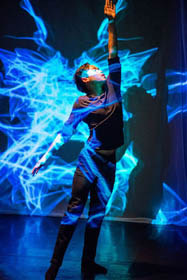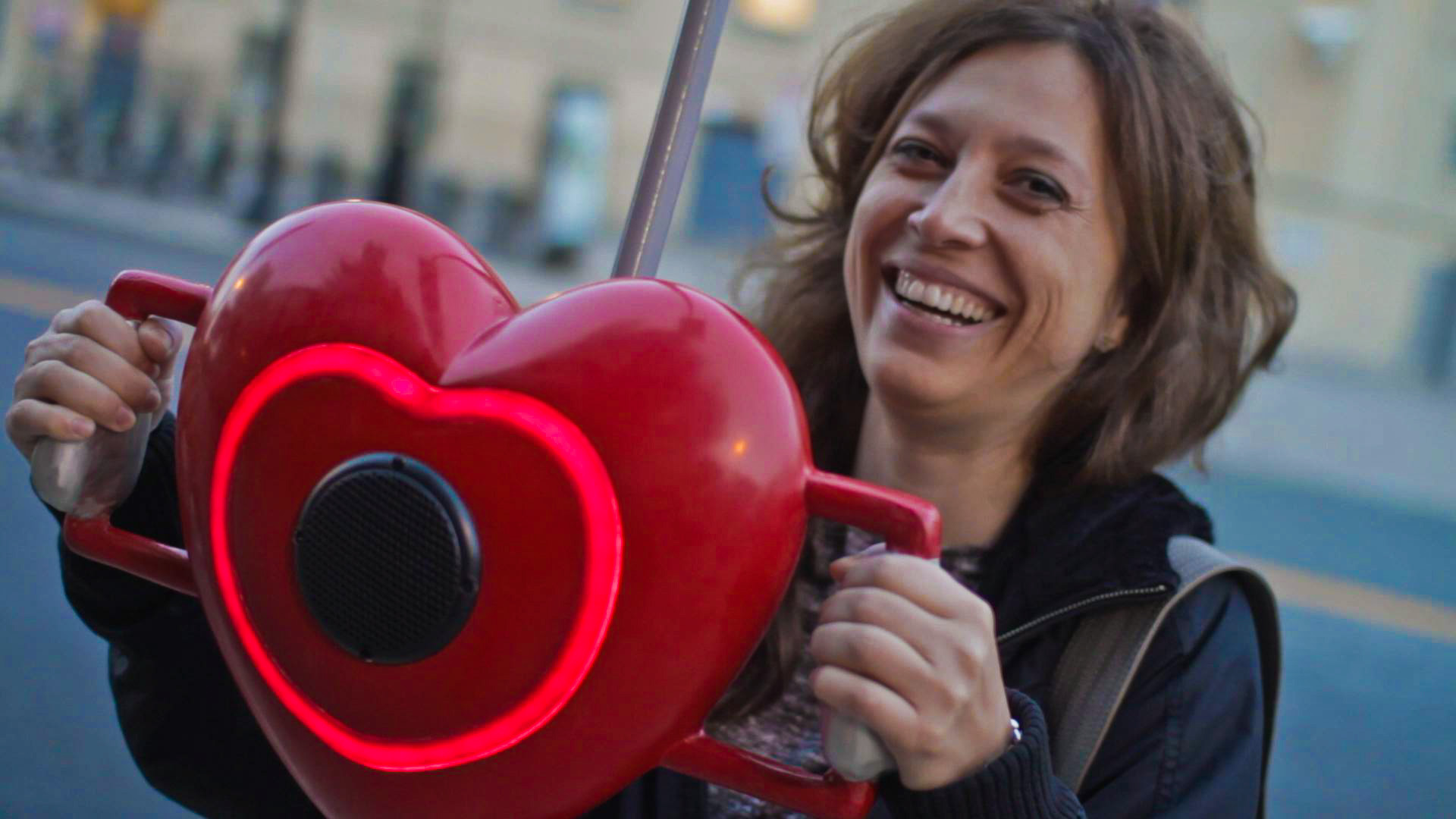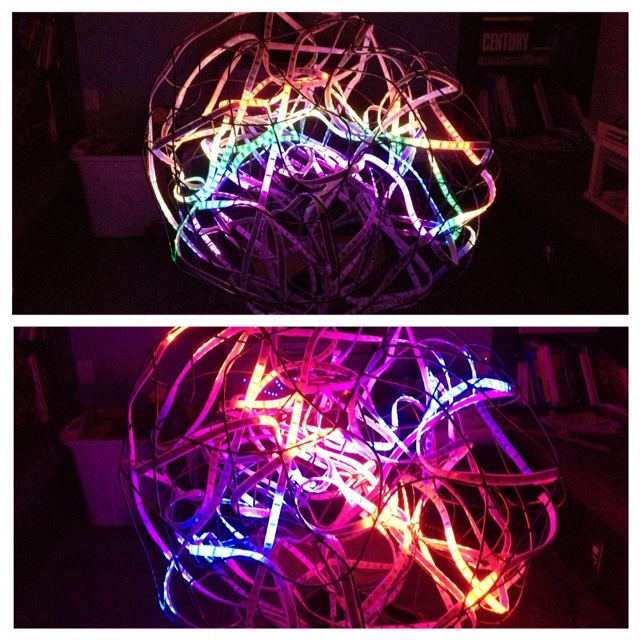Images
From Karen Marcelo
From Sam Coniglio
From Jade Kwan
time:
7:30pm WEDNESDAY
20 November 2013
place:
dimension 7
150 Folosom St. (between Main and Spear)
San Francisco, CA
FREE ADMISSION But donations ($5-$20) to our hosts would be very much appreciated.
CASH BAR 21+
Snacks from @grilledcheezguy
Books from RE/Search available!
Stay for the AFTER PARTY! DJ Starpause/k9d with generative visuals from k0re

dimension 7
150 Folsom St, SF, CA
Aubrey Shick - The Romibo Robot Projet - Designing an Evolving Social Robot for Special Needs Therapy
The Romibo Robot Project is developing an evolving robot for motivation, education and social therapy. Our project goal is to improve research techniques through the use of robots and social therapies while providing value to the Do-It-Yourself movement and STEM education initiatives. The robot has been designed around applications for individuals with conditions including autism, traumatic brian injury and dementia. Romibo includes features taken from other therapeutic robots currently used in research, such as Keepon, Pleo and Paro. The Romibo Project stands out by providing a low-cost development platform while providing the necessary features for use in a wide range of social therapies. The platform features a fully customizable design, allowing for individual creativity, ease of assembly and experimentation. Romibo is a social robot, able to convey emotions, communicate socially, and form relationships with individuals. This talk will describe the genesis of the project, applications and how YOU can get involved.The Romibo Robot Project is currently in development at the Robotics Institute at Carnegie Mellon and by Origami Robotics LLC. It is sponsored in part by the National Science Foundation, the University of Pittsburg and Carnegie Mellon Quality of Life Technology Center and the Pittsburgh Sprout Foundation.
Aubrey Shick is the creator and director of the Romibo Robot Project at the Quality of Life Technology Center in the Robotics Institute at Carnegie Mellon University in Pittsburgh. She is also the founder and CEO of Origami Robotics LLC. She specializes in assistive technologies with a focus on wearable computers and social robotics. Aubrey holds a Bachelors of Industrial Design and Masters in Human-Computer Interaction from Carnegie Mellon

Weidong Yang - Intermedia Dance Performance (1.0->2.0)
Development of modern technology challenges the effectiveness of conventional dance performance, but also present opportunities for creating new way of performing. What's possible today? How can technology make a performance more effective? In Kinetech, we explore the synergy of art, science and technology. We are developing new intermedia dance platform that take advantage of what current day technology has to offer.Weidong Yang has indulged in the fields of science (Ph.D in Physics and MCS Computer Science), dance, photography, and Taiji. Having grown up in China and received high education in US, he has experienced two drastically different cultures. Kinetech demands him to tap into all these past experiences. Weidong envisions Kinetech to be a place for synergy of art and technology, as well as for people with vast different background and training, working together creatively, making beauty that is beyond what's possible by a single person.

George Zisiadis - Pulse of the City - From Prototype to Permanent
Artist George Zisiadis will discuss the making of Pulse of the City, an interactive public art installation that turns heartbeats into music. He will tell the story of how it evolved from a $1,000 cardboard prototype to a fully functioning public art piece.George Zisiadis is a San Francisco based artist and designer.
His interactive projects draw out the curiosity and fun that lie within us all. They playfully re-imagine people's relationships to their environments and to themselves.
He collaborates with major brands like Nestle and institutions like the City of Boston to create engaging, interactive experiences for thousands in public settings.

Christopher Schardt and Peter Tjeerdsma - Setting your Pixels Free (from a Regular Grid)
The past decade has seen a growing quantity and quality of LED art - some regular grid of LEDs, each of which is individually controllable by a computer, so as to draw a picture and/or video images. What's new about the pieces we're showing is a technique that allows the LEDs to be arranged in no order at all, and still compose the images.Tangle, a piece by Christopher Schardt is a 1meter diameter wire mesh "boulder" with LED strips (1920 LEDs total) tangled through it. https://www.facebook.com/photo.php?v=10151978479331057
Dreamcoat, a piece by Peter Tjeerdsma is a full-length fur coat incorporating a wrap-around LED video display driven by an iOS app. He will have it running on a stand, opened up to show its structure, plus docs on how it was built. If there's time and interest, he can also describe the open-source PixelPusher architecture, the PixelMapper app by Rus Maxham, and show some other PixelPusher art.
Christopher Schardt is an Oakland-based artist whose LED work dates back to a piece called Spin in 2000: http://www.schardt.org/spin. Since then, he's made a number of large-scale art for that-thing-in-the-desert, most recently a series of kinetic fire sculptures that derive their motive force from the (meager) thrust of its propane burners: Charwash http://www.pbase.com/schardt/charwash.
He also does iOS programming for a living and is very excited to be applying his app-writing skills to his art.
Peter Tjeerdsma started wrangling photons in 1985, designing live effects and UI for the first real-time Amiga video digitizer, followed by the Video Toaster, LightWave 3D and Trinity broadcast video and animation systems. At Burning Man 2006 he was architect and engineer for Conexus Cathedral, a full-sized skeletal gothic church. He is currently introducing liberty training techniques to free-range pixel breeders in the Bay Area.

If you would like to give a presentation in the future or host a dorkbotSF meeting, please contact Karen Marcelo at dorkbotsf [at] dorkbot [dot] org